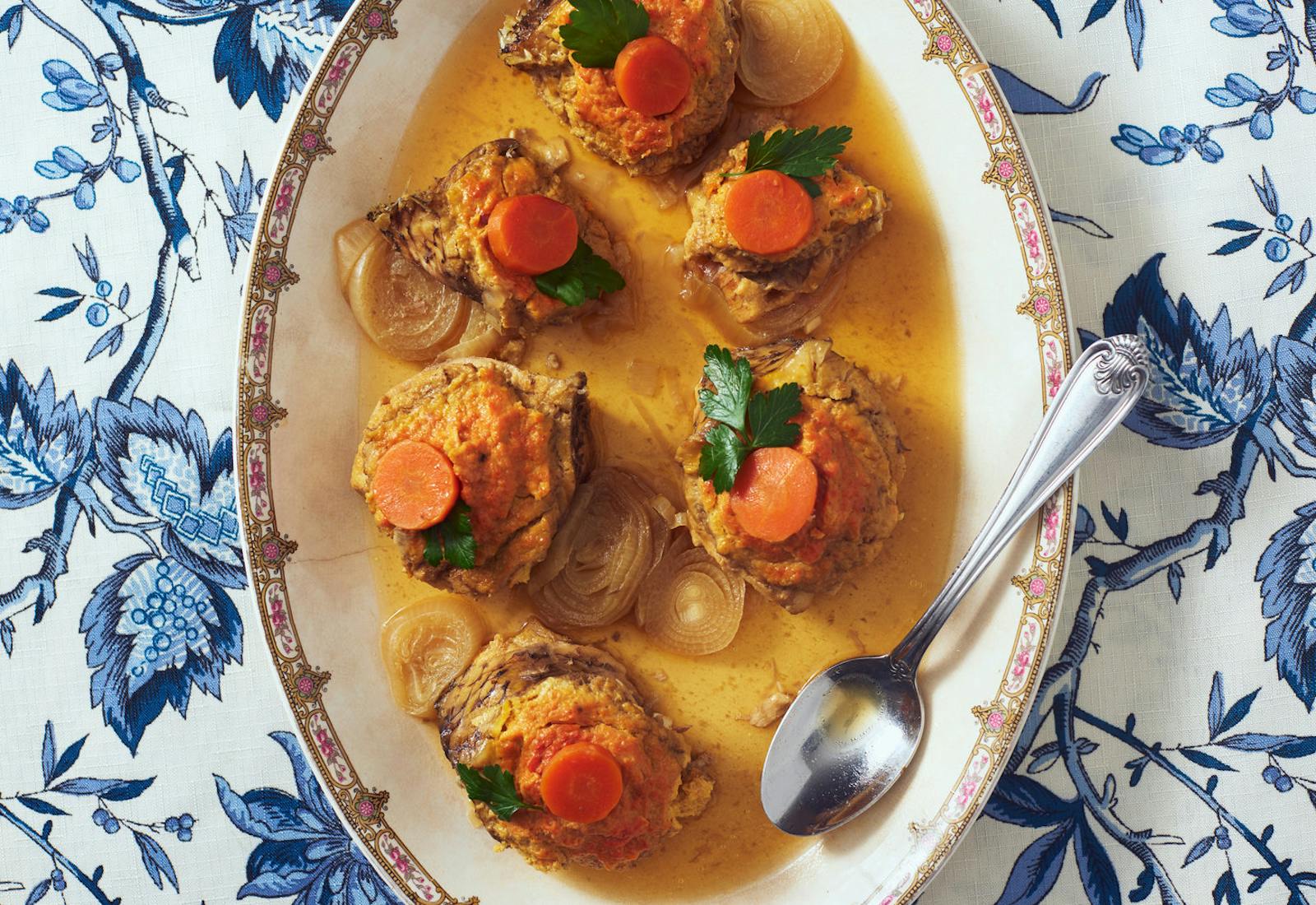Shared by Dorit Golender


This recipe was shared by Dorit Golender. Read more about her family in "The Lithuanian Gefilte Fish From a Grandmother She Never Knew."
Dorit’s family recipe is for an old world style of gefilte. Traditionally, carp and pike were used, but both types of fish have become harder to find (especially in the U.S) and are typically replaced with whitefish or a mixture of other types of saltwater fish like hake or sole. Her grandmother Shula’s recipe also calls for stuffing the mixture into the fish skin before poaching (gefilte, after all, means stuffed in Yiddish). We have adapted Dorit’s recipe, with a focus on capturing the flavor, but making it easier to attain. If you are feeling adventurous, however, you can buy your fish whole (enough to yield around 2 lbs of fillet). Ask your fishmonger to clean and gut the fish from the neck so that the belly is not cut. Then, have them cut the entire fish into 1 inch slices, cleaning the fillet meat and remaining bones out of the rounds but still keeping the complete rounds of skin in tact. Follow the recipe until step 5 and instead of shaping the fish mixture into patties, stuff it back into the fish skin rounds and place over the onions before poaching.
Finely chop two of the onions. In a medium skillet, heat the oil over medium-high heat. Add the onions and sauté on low until soft and golden brown, about 15 minutes.
Peel and quarter one onion and place it in the bowl of a food processor along with one of the carrots, and the beet. Pulse until finely chopped. Add the fish and pulse again until fish is chopped but not mushy (you should still be able to see small pieces of fish in the mixture). Transfer the mixture to a large bowl and add the sautéed onions, eggs, 1 tablespoon of vegetable oil, 2½ teaspoons of salt and ½ teaspoon of pepper. Mix until well combined.
Let the mixture rest for 10-15 minutes. Add 4 tablespoons of matzo meal and mix to combine evenly. If the mixture still seems wet, add more matzo meal one tablespoon at a time. You want the mixture to be able to hold together when shaped into a patty.
Slice the remaining four onions into 1” rounds (you do not have to peel them, just make sure that they are clean) and line the bottom of a large, heavy-bottomed braising or roasting pan with the rounds.
Using a spoon or wet hands, shape ¾ cup of the fish mixture into a round or oval patty. Gently place the patty over the onions on the bottom of the pan. Repeat with the remaining mixture. Sprinkle the remaining carrots over the top and in between the fish patties.
Cover the patties with 6-8 cups of cold water (you want the patties to be covered by about 1” of the water). Add 1 teaspoon of salt and ½ teaspoon of black pepper to the water. Bring to a boil over high heat, and then add ¼ teaspoon of sugar.
Reduce heat to low and simmer uncovered for 1.5 hours.
Remove the prepared gefilte fish fillets from the pan and place in a baking dish. Strain the sauce, reserving the carrots with the gefilte fillets. Pour the strained poaching liquid over the filets in the baking dish so that they are sitting in ¼” of the liquid. Cover and refrigerate overnight.
Serve as the first course, at room temperature topped with a carrot round and with plenty of horseradish on the side.